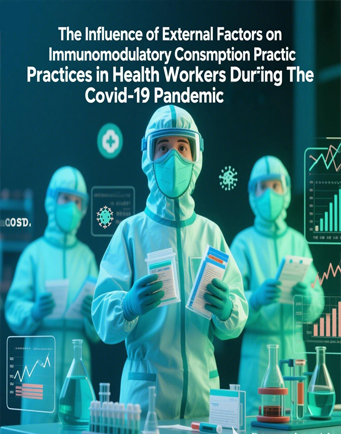Author Guidelines
AUTHOR GUIDELINES
MANUSCRIPT PREPARATION AND SUBMISSION
Initial submission
The article is the result of a research study in health. The article should be written in English. The initial submission should be clean and complete but does not have to comply with all Jurnal Info Kesehatan (Journal of Health Info) specifications yet.
Manuscripts of insufficient priority or quality are promptly rejected. Manuscripts retained to undergo a review process for potential publication in the Journal will be submitted to a technical check. Authors will be informed immediately if their manuscripts need reformatting and will be given 14 days to make specific changes.
Visit https://jurnal.poltekkeskupang.ac.id/index.php/infokes for online manuscript submission.
Questions? Write jurnalinfokesehatan@gmail.com or call M. Ibraar Ayatullah at (+62) 813-1411-9647).
Manuscript File Formats
All manuscripts should be submitted in Word document format. Jurnal Info Kesehatan submission system is located at http://jurnal.poltekeskupang.ac.id/index.php/infokes
Manuscript Types
Original Articles: This is the most important type of article since it provides new information based on original research.
Review Articles: Reviews prepared by authors who have extensive knowledge on a particular field and whose scientific background has been translated into a high volume of publications with a high citation potential are welcomed. These authors may even be invited by the journal. Reviews should describe, discuss, and evaluate the current level of knowledge of a topic in clinical practice and should guide future studies.
Manuscript Components
The research result article consists of: Title, author's name, abstract in English, keywords, introductions, research methods, results and discussions, conclusions, and References.
The review article consists of: Title, author’s name, abstract in English, Keywords, Introductions, research methods, results and discussions, Conclusion, and References.
The author must attach a plagiarism-checking document (can use Turnitin, iThenticket or something else). The maximum similarity tolerated is 20%.
WRITING GUIDE
Title
- The title is written in English and informative, concise, and not too long or short (10- 25 words).
- Consists of the variables under study and describes the content of the manuscript.
- A title does not contain abbreviations or formulas.
- The title page should include the title of the manuscript only. The names of authors should be deleted to ensure the double-blinding of the paper during the peer review process.
Abstract
- The abstract is concisely written, about the most important ideas and contain the problems or research objectives, research method, and research results.
- Written in an English language with 300-350 words maximum.
- Keywords contain main words.
Introduction
An introduction is presented in an integrated manner without subtitle. It is written in the form of paragraphs with a contains:
- Background or research rational.
- Theoretical basis (literature review in brief).
- Research Objective.
Research Method
The method is written with a containing:
- The study design.
- Data collection techniques and data sources.
- Method of data analysis.
Result and Discussion
The results represent a major part of scientific articles containing:
- Results of data analysis.
- Results of hypothesis testing.
- It can be presented with a table or graph to clarify results verbally.
- Discussion is an important part of the entire scientific article. The purposes of the discussion are: answer the research problem, interpret the findings, integrate the findings of research into the existing knowledge, and formulate a new theory or modify the existing theories.
- A serial number that is used is number 1, 2, 3, and so on, do not need to use a composite number. Hyphens should not change the serial number.
Conclusion
- Contain conclusions and recommendations.
- Conclusions contain answers to the research questions.
- Recommendations refer to the results of research and practical form of action, specify to whom and for what recommendation is intended.
- Written in essay form, not in numerical form.
Tables
- Please submit tables as editable text and not as images. Tables can be placed either next to the relevant text in the article, or on separate page(s) at the end. Number tables consecutively in accordance with their appearance in the text and place any table notes below the table body. Be sparing in the use of tables and ensure that the data presented in them do not duplicate results described elsewhere in the article. Please avoid using vertical rules and shading in table cells.
Figure
- Ensure that each illustration has a caption. Supply captions separately, not attached to the figure. A caption should comprise a brief title (not on the figure itself) and a description of the illustration. Keep text in the illustrations themselves to a minimum but explain all symbols and abbreviations used.
References
The main references are national journal, international journals and proceeding. All references should be to the most pertinent and up-to-date sources:
- Contain literature that is referenced in the content, arranged alphabetically, and written in the APA (American Psychological Association) 6th Edition system.
- Fully written, appropriate with the references in the content.
- Only load literature referenced in the content.
- Source of reference are at least 80% from literature published last 10 years.
- References are least 80% from research article in journal or research reports.
- Reference format is APA (American Psychological Association) 6th Edition style better to use Reference Manager (Mendeley, Zotero or Endnote, etc).
Example:
Journal:
Author1A, Author2 B. (Year).Title of Manuscript.Name of Journal or its Abbreviation. Vol.(Issue),pages. doi
Casadei, D., Serra, G., Tani, K. (2007). Implementation of a Direct Control Algorithm for Induction Motors Based on Discrete Space Vector Modulation. IEEE Transactions on Power Electronics,15(4), 769-77. http://doi.org/10.1109/63.849048
Proceeding:
If the proceedings consists of several volumes
Author1 A, Author2 B.(Year).Title of Manuscript. Name of Conference of Seminar. City.Volume: pages. doi
Calero C, Piatiini M, Pascual C, Serrano MA. (2009). Towards Data Warehouse Quality Metrics. Proceedings of the 3rd Intl. Workshop on Design and Management of Data Warehouses (DMDW). Interlaken. 39, 2-11. http://doi.org/10.1109/63.849048
Texbooks:
If the references are refer to specific page range in a book
Author1 A, Author2 B. (Year). The Title of the Book. Edition. City: Publisher. pages.
De Vaus, D. A. (2014). Surveys in social research. Sydney, Australia: Allen & Unwin.
Book chapter:
If the references are refer to specific page range in a book chapter
Author1 A, Author2 B. (Year). The Title of the Book. Edition. City: Publisher. pages.
McKenzie, H., Boughton, M., Hayes, L., & Forsyth, S. (2008). Explaining the complexities and value of nursing practice and knowledge. In I. Morley & M. Crouch (Eds.), Knowledge as value: Illumination through critical prisms (pp. 209-224). Amsterdam, Netherlands: Rodopi.
Newspaper article:
Author1 A, Author2 B. (Year, Month date). The Title of the Newspaper Article. Publisher. Retrieved from………..
Fellner, C. (2019, April 7). Time bomb: Two new cases as NSW faces worst measles outbreak in years. The Sydney Morning Herald. Retrieved from https://www.smh.com.au.
Note:
Please be sure to check for spelling and grammar before submitting your paper.





































